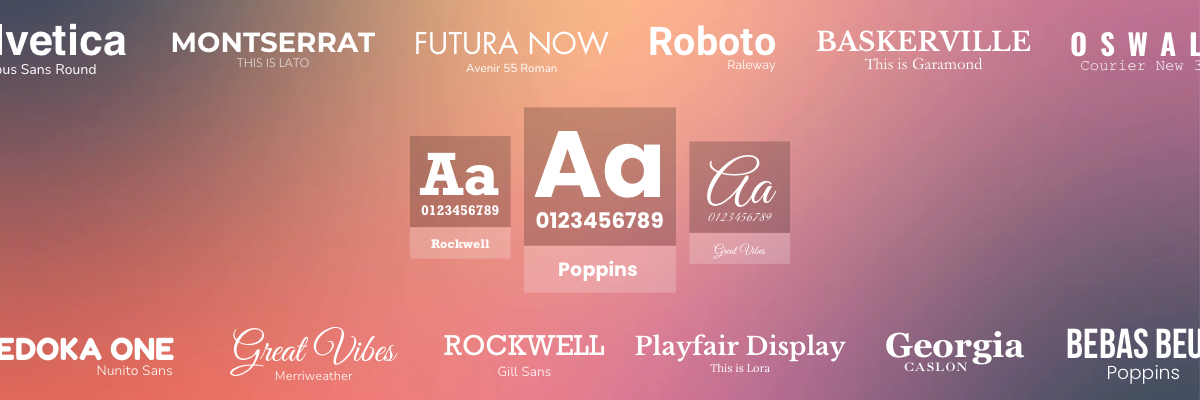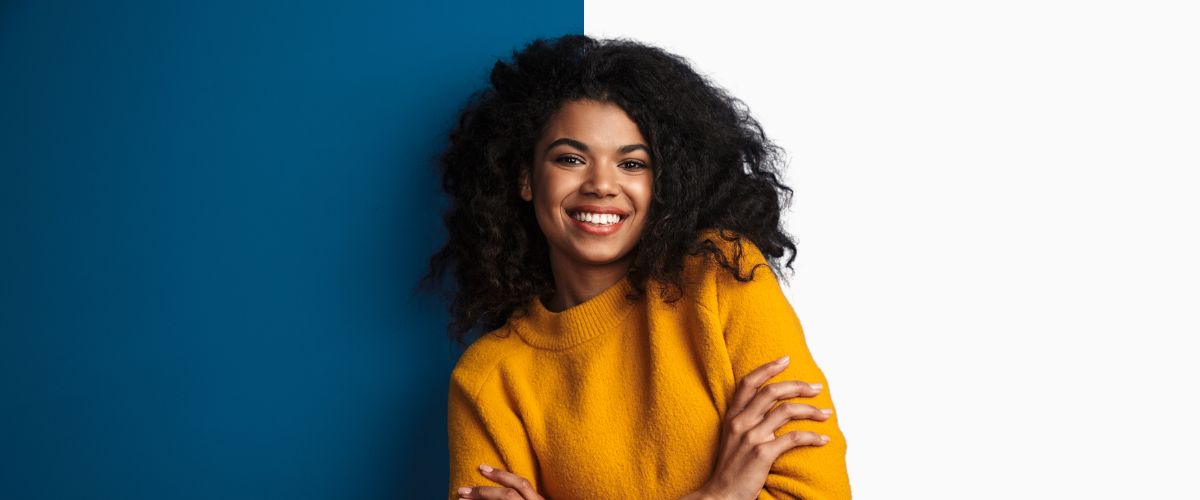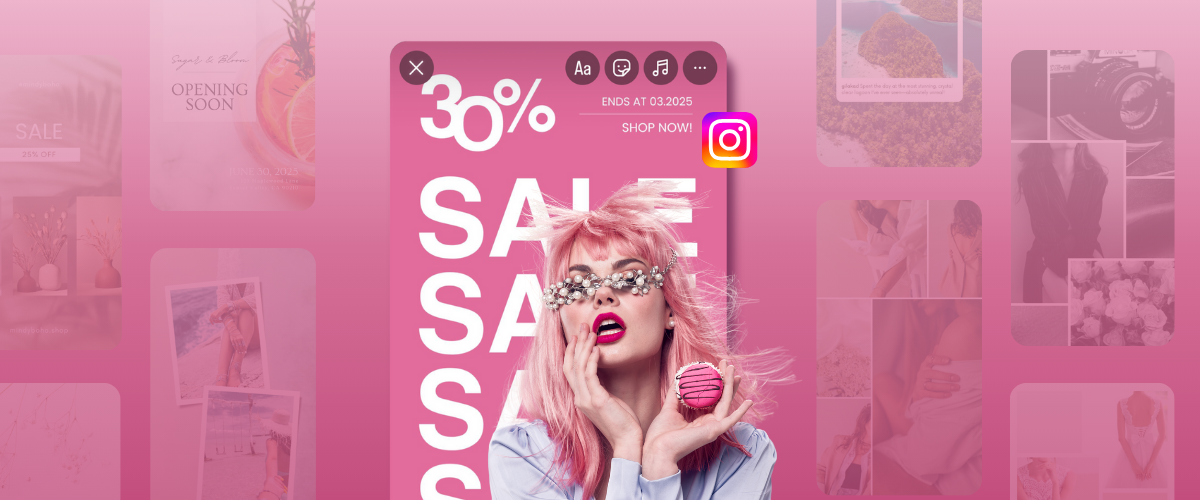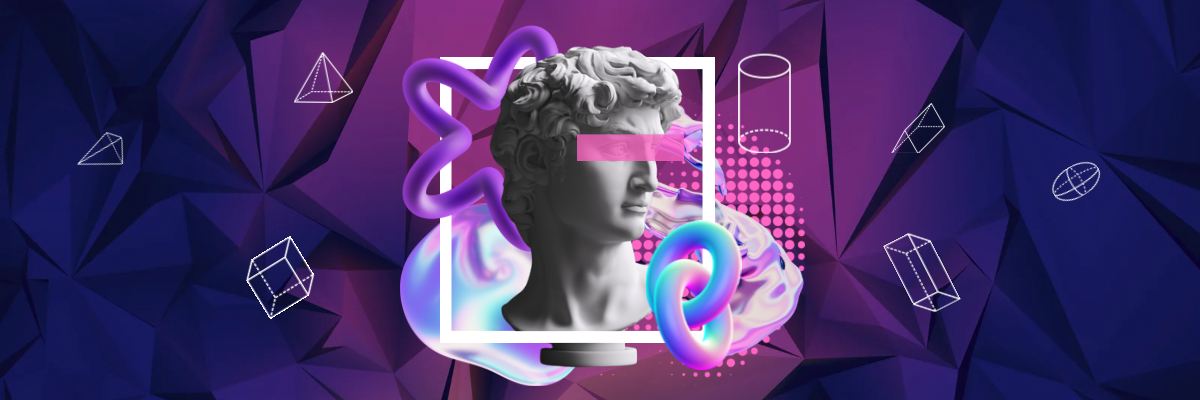
2025 Graphic Design Trends
Trends reflect how people see, feel, and interact with the current world. Every shift in technology, culture and consumer behavior direct how we tell stories, create, and even connect with others in writing or in design.
These designs are trending in 2025. Check out them out, discover, and experiment on your next project.
Trend #1: Maximalism is Making a Comeback!
After years of sticking to muted tones, white spaces, and clean lines, people are again craving for creative freedom through expressions of boldness and vibrance. Maximalism fuels this desire to stand out and to achieve a unique self-expression.
The main drivers of this trend?
Gen Zs.
As a generation that grows up on TikTok, Pinterest boards, and dopamine décor, Gen Zs thrive in a world where their feed is their canvas, and their identity is built on what they love. Maximalism perfectly fits their personality: bold, expressive, and unapologetically individual.
And the numbers back it up. According to a recent New York Post, 2025 feature, 38% of Gen Z homeowners prefer maximalist interiors, loving wallpaper, bold colors, stained glass, and even animal prints. Similarly, Real Simple states a Pinterest trend report shows a growing obsession with eclectic, layered aesthetics—a shift fueled by Gen Z’s influence in redefining what “good taste” looks like online.
So what does maximalism look like?
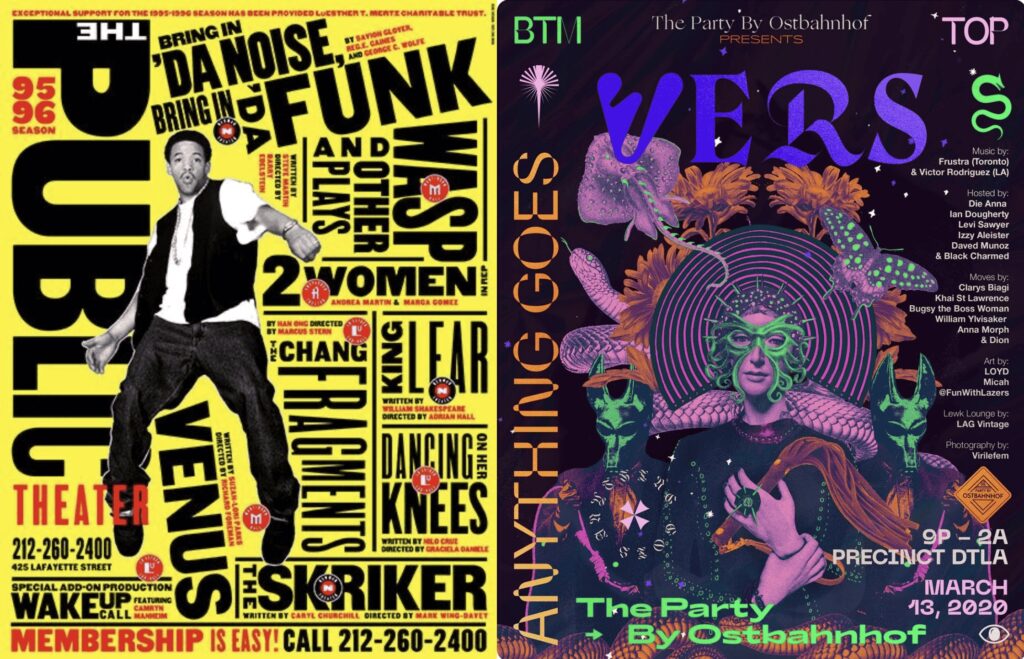
- Bold Color Palettes – Neon tones, vibrant primaries, and clashing hues that demand attention.
- Layered Typography– Mixed fonts, oversized text, stacked words, and playful letter arrangements.
- Pattern-on-Pattern – Florals with stripes, grids with abstract shapes—visual contrast is the goal.
- Rich Textures – Grainy overlays, glossy highlights, metallic sheens, and fabric-like visuals.
- Visual Collage Style – Multiple images, icons, and illustrations layered like scrapbook pages or zines.
- Decorative Borders & Frames – Elements aren’t just placed—they’re dressed up and embellished.
- Clutter with Intention – Every element serves a purpose, even in the chaos. It’s storytelling through visual layering.
- Nostalgic & Eclectic References – Retro posters, pop art, Y2K chrome, 70s psychedelia—used with a modern twist.
As bold visuals dominate digital spaces and personal expression becomes the new standard, this graphic design trend is here to stay, evolving with every scroll and swipe.
Trend #2: Motion & Interactive Design
A Microsoft study famously reported that the average human attention span has dropped to just 8 seconds—shorter than a goldfish.
Alarming? Yes. Surprising? Not really.
In a digital space flooded with content, users scroll fast, skim faster, and bounce even faster. This is where motion and interactivity come in—not just as design trends, but as strategic tools.
Interactive elements aren’t just decorative—they’re functional. They tell users what to look at, what to do next, and why they should stay. Animations, transitions, and hover effects serve a purpose: they guide the eye, reduce cognitive friction, and create small moments of delight that keep users engaged.
From Lottie animations on onboarding screens to scroll-triggered transitions on landing pages, designers are using movement to maintain focus and build richer, more memorable experiences.
Articles, posters, and social media posts work fine on their own, but nothing works harder than a cleverly placed ad in the middle of a YouTube video or a banner that’s more entertaining to interact to. After all, what an online read explains in 15 minutes, a video can explain in a fraction of the time.
Larry Mutenda, a digital marketing consultant and owner of Mammothic Group Inc. reinforces, “In the world of digital marketing, video reigns supreme.”
Trend #3: Eco-Conscious & Sustainable Design
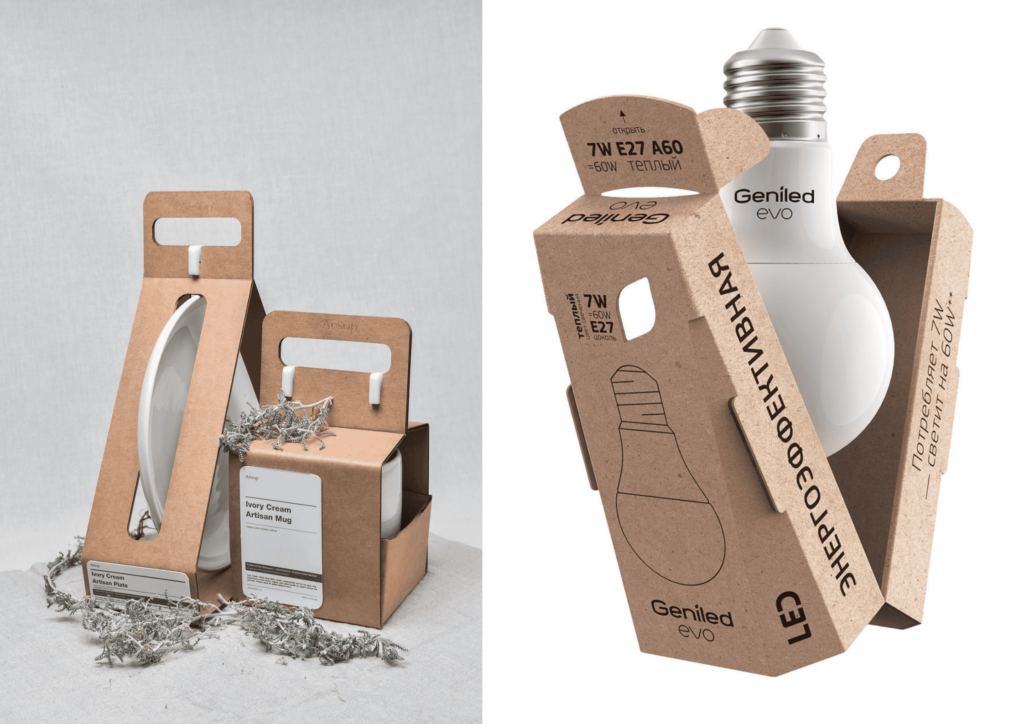
Sustainability is design with a mission. Trends may come and go, but sustainable design will stand the test of time as it aims for a long-term impact —prioritizing environmental responsibility, ethical materials, and digital efficiency.
From using recyclable packaging to designing low-bandwidth websites, today’s creators are embracing sustainability not as an afterthought—but as a core design philosophy.
In 2023, an IBM study found that 49% of their responders are willing to pay more for brands that actively reduce their environmental impact.
So what does the masses want?
Brands that walk their talk—those that desire a better future for the environment. Visuals plastered on reusable packaging, digital campaigns powered by renewable energy, and those who actively embed sustainability into their business model—these are what people want.
What Sustainable Design Looks Like:
- Earth-toned color palettes and organic textures
- Modular layouts for content reuse
- Vector-based graphics (lighter file size = faster loading)
- Minimalist digital interfaces that save energy
- Eco-conscious packaging mockups for product design
In a world flooded with fast content and throwaway visuals, sustainable design stands out by standing for something. Renowned graphic designer Otl Aicher once said, “Good art inspires; good design motivates.” Sustainability remains one of the current graphic design trends.
Trend #4: 3D & Immersive Experiences
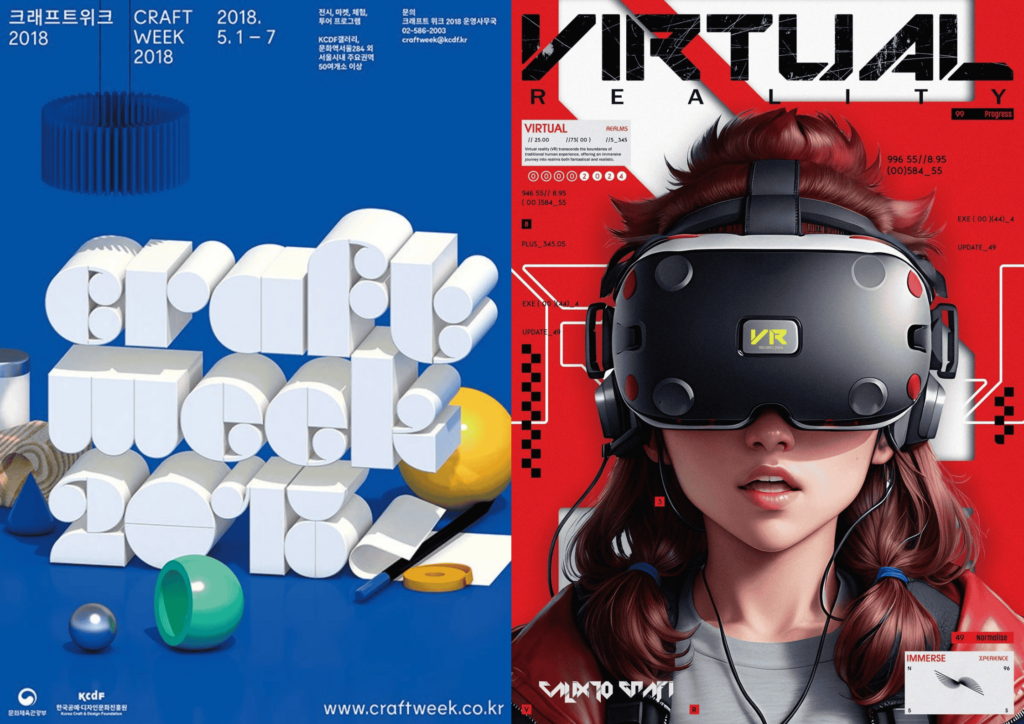
Wanna know what’s more fun than looking at moving images? It’s moving images yourself!
We’re talking about taking interactive designs up a notch! Immersive experiences by AR and VR. Unlike other 2025 graphic design trends, these designs rely on novelty and initial shock to hold attention. 3D experiences respond to the demand for enhanced user experiences.
Beyond what we can feel and touch, immersive technologies become more than just a tool to escape. It becomes a ‘digital twin‘ of the physical world, helping us to sole problems and meet people’s needs.
As Ivan Chermayeff put it, “Design is directed toward human beings. To design is to solve human problems by identifying them and executing the best solution.”
Trend #5: Custom Typography & Hand-Drawn Elements
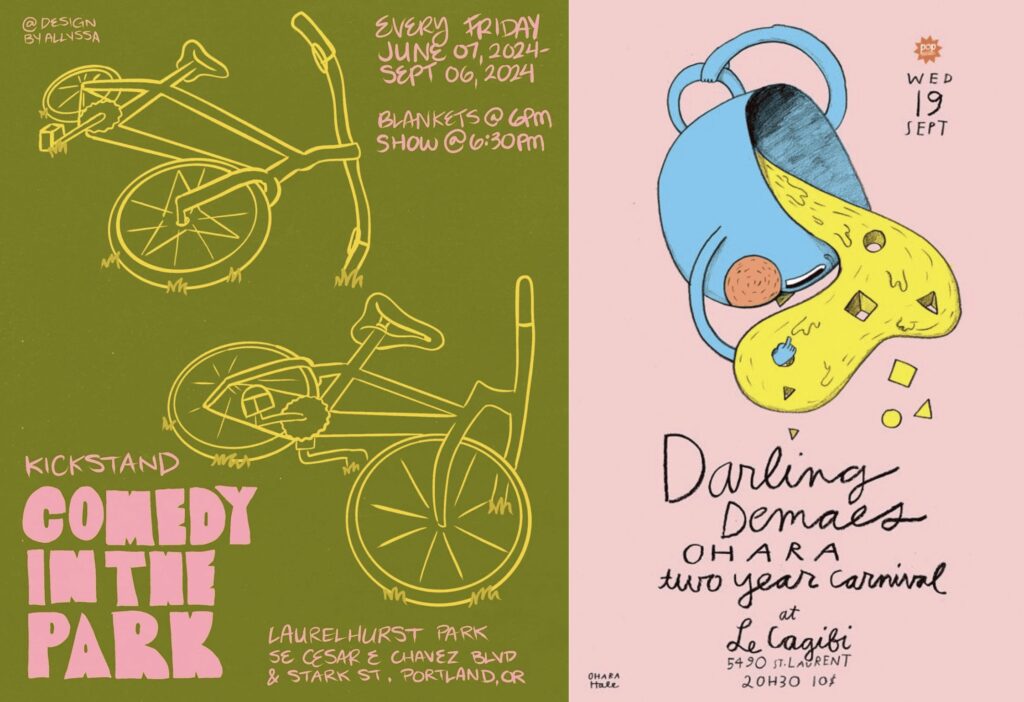
Over the years, typography has found its way to some changes, too. And no matter what the current trends point to, people will always seek authentic and unique creations. With this, hand-drawn designs are getting more attention. Designers are intentionally introducing imperfections and irregularities into their designs. The organic textures and hand-lettered logos are their way to celebrate the beauty of human expression. Or maybe it’s to express rebellion against the current takeover of AI in the design scene.
Well? Who knows?
Combining good font pairings with minimalism can enhance the appeal of any graphic design. Take it one step further with a background remover and let its charming and untamed identity do the talking.
The father of conceptual typography, Herb Lubalin, famously stated, “You can do a good ad without good typography, but you can’t do a great ad without good typography.”
Trend #6: Nostalgia & Retro-Futurism
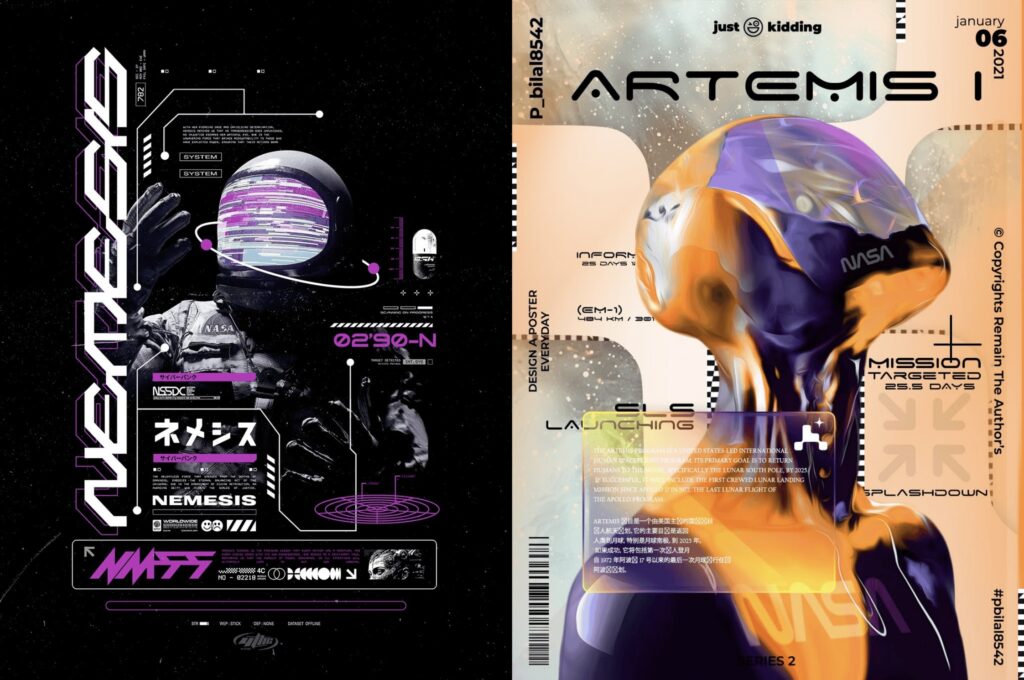
Nostalgia marketing is cutting across the graphic design scene as brands find more ways to tap into Gen Z’s love for vintage with a modern twist. One study showed that people care less about money when they feel nostalgic, making them more likely to splurge.
To quote American graphic designer, David Carson, “Graphic design will save the world right after rock and roll does.” Just like music, design is a cultural force that defies time.
2025 graphic design trends prove that styles don’t vanish in thin air. Much like how modern artists breathe life into rock and roll classics with a fresh contemporary twist, designs are just revivals waiting to happen when nostalgia strikes the right chord.
Trend #7: Experimental Layouts & Asymmetry
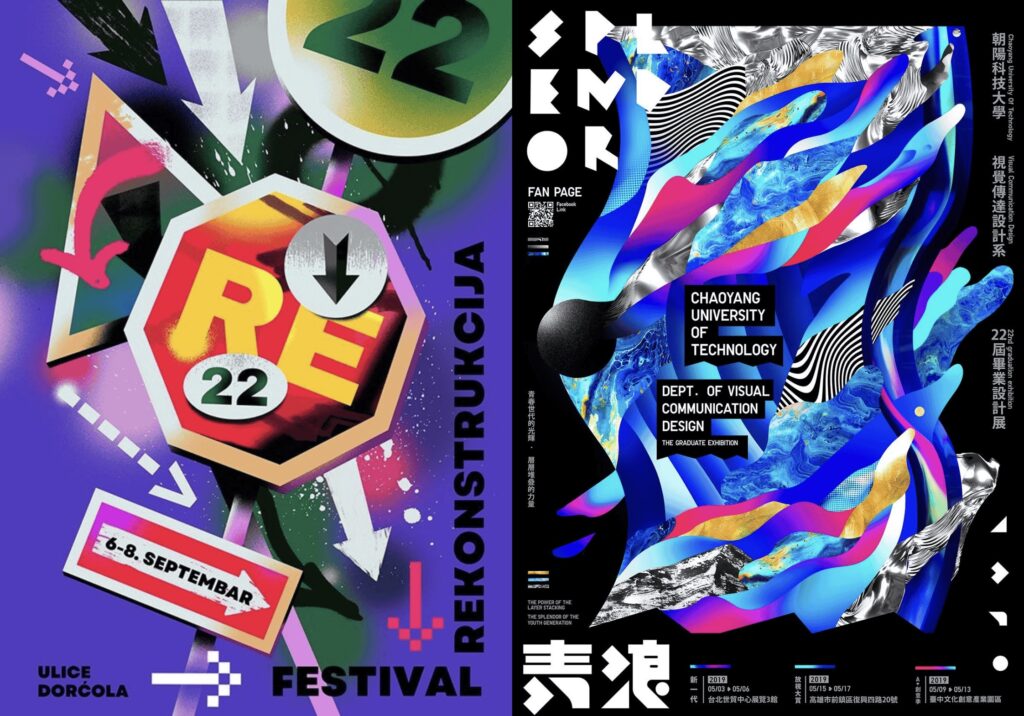
For a long time, graphic design was about playing by the rules. Anti-design, or the denial of traditional aesthetics, challenges this notion by tossing traditional lines and perfect shapes aside and fully embracing rebellious compositions.
For one, AI use and the accessibility of online templates run the risk of producing similar designs. In response, an increased preference for the ‘undesigned’ aesthetic is gaining momentum as one of the rising trends in graphic design – shying away from overly polished and corporate looks and embracing glitchy, playful, and often unexpected combinations.
Charli XCX’s latest studio album, Brat, with its distorted typography and neon green glory, might not seem like a carefully planned design choice. But, its calculated ugliness disrupted the status quo and challenged industry norms, sparking conversations both polarizing and unforgettable.
As Jessica Walsh famously said, “If no one hates it, no one really loves it.“
Trend #8: AI-Powered Design Tools
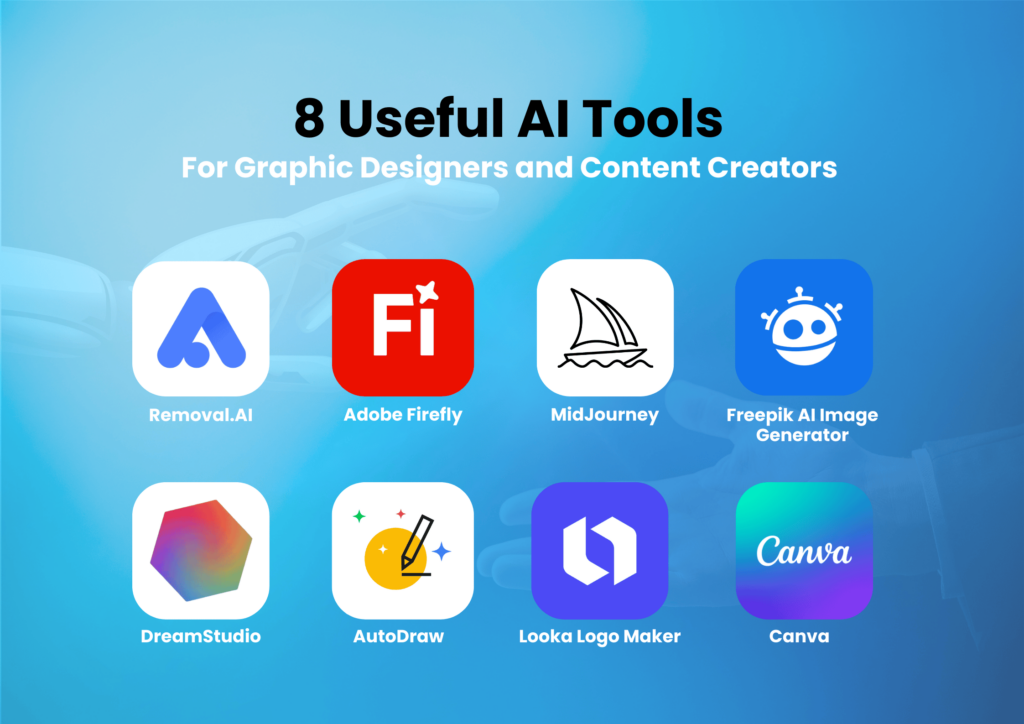
A study in 2024 about exploring the role of AI in the design industry zooms in the changes in expectations placed on graphic designers as AI enters the scene. Among these is the unloading of the burden of repetitive tasks on their backs. With more time on their hands, creatives turn their attention toward higher-level skills. On the flip side, the demand for junior designers might decline because of automation.
But while AI-driven technology comes with a lot of benefits, professional designers show concern about its downsides. As creative director, Daniel Mall warns people: “Technology over technique produces emotionless design.” True enough, letting AI take over entirely will lose our ability to connect as ‘humans’.
Step-by-Step Guide to Implementing the Trends
The current graphic design trend for 2025 might feel like a lot to start with. Let this quick guide help you use these trends to your advantage with the following steps:
Step 1: Decode your brand and audience.
The worst thing you can do when trying to market your brand is to jump on the hottest trend without careful intention. While anti-design and experiment layouts may appeal to younger folks, you might want to take a step back and consider a minimalist graphic design style if your business is targeting professionals.
Not every trend will reflect your brand’s values. Identify what you’re going for first to narrow down your target audience. From there, utilize social media analytics, polls, and surveys to filter out possible marketing techniques.
Step 2: Scavenge for inspiration.
There’s nothing wrong with scrolling through Pinterest and Behance, but it takes more than the passive viewing of visual examples to create a brand that feels true to your core.
Everything we know now is because of history. If you’re into expressive typography, explore skate culture, graffiti, and art movements like Bauhaus and constructivism. Beyond vintage magazines and digital screens, try to visit art galleries, fashion exhibits, and antique shops.
Experiment with layers, study other artists’ works and learn from their influences.
But most importantly, don’t expect to have it all figured out in a day. Oftentimes, the best ideas don’t arrive by deliberately looking for them but by letting inspiration come naturally.
Step 3: Update your toolkit.
Before you turn your vision into reality, assess your resources and technical proficiency. Beginners often benefit from comprehensive brand identity platforms like Canva and Figma. With these integrated platforms, there’s no need to download multiple standalone tools to help you select the appropriate typography, the right mix of color schemes, and layout options because everything is already integrated. On the other hand, you should always explore various AI tools to further elevate your brand visuals. For example, using an online AI image editor can help you enhance your images more efficiently and creatively. You might discover unexpected design possibilities and add a unique, artistic touch to your brand that sets it apart.
Experienced designers, on the other hand, might opt for specialized software that lets them have greater creative control – whether that’s custom typography with Glyphs or hand-drawn details using Procreate.
Nevertheless, knowing how to balance human craftsmanship and AI for graphic design will help you stay distinct and noticeable among a sea of similar-looking brands.
Step 4: Experiment with small projects.
The key is gradual implementation. Testing the waters before launching a full-scale brand debut or rebrand can save you from a potential design disaster.
Start with smaller assets on a smaller audience. This can mean releasing two versions of the same infographic on social media or different product packaging choices for unreleased merchandise through email.
This can serve as a case study to see which ones align with customer expectations. Aside from this, it also buys you more time to decide between rejecting or keeping a design trend that might look good on paper but not feel on-brand with your business.
Step 5: Fine-tune your strategy.
Launching your brand is only step one, but the work doesn’t stop once it’s out in public. Trends are fleeting, and the talk of the town today can feel outdated tomorrow. Here are a few things you can do to make sure your designs don’t lose their impact:
- Keep tabs on social media engagement.
- Pay close attention to conversion rates and customer feedback. See where you fall short and take note of areas for improvement to work on next time.
- Remove background distractions.
- Your numbers tell a story – listen closely. If your performance metrics take a dip, your visuals might be the culprit. Make sure that other elements aren’t pulling the focus away from the main message.
- Stay adaptable.
- Let your designs stand out at the right place and time. Try to embrace seasonal and holiday elements with an updated color palette or decorative accents. Keep a pulse on the trends and make necessary adjustments – just don’t lose the essence of your brand.
Need a bit more info?
A: You can follow design platforms like Behance and Dribbble, read trend reports from various design websites, and stay active on design groups or pages in X, Facebook, or Instagram. Trends often mirror culture, so stay observant and curious.
A: AI and Automation, Gen Zs, and the emergence of various graphic design tools.
A: Gen Z loves bold, chaotic layouts, Y2K nostalgia, lo-fi edits, and meme culture. Authenticity beats perfection every time.
A: Lately, brands are outgrowing neutral colors and flat, two-dimensional compositions – not because the minimalist graphic design style is fading, but because it’s getting harder to stand out in a market saturated with identical aesthetics. Instead, they’ve turned their attention to the intentional presence of quirky elements and high-contrast fonts against a white background, and hiding of subtle messages woven into negative space.
A: Start by observing graphic design trends, then adapt only what aligns with your vision. Use new elements—like colors or textures—as accents, not replacements. The goal is evolution, not imitation. Your personal style should anchor your work, while trends add freshness and relevance.
A: Authentic and original design never fades. Everyone loves visuals that reflect genuine stories, have clear intent, and with a unique voice, they resonate longer than trend-based work. Staying true to your message and creative instincts gives your design lasting value, even if trends change.
Ready to Design in 2025?
The thing about great designs is that they don’t start as instant masterpieces – they’re a careful product of timing, insight, and strategy. In the same way, great designers did not stumble upon brilliance; they studied the times, anticipated cultural shifts, and had the foresight to predict the next big thing. In other words, they were relevant. And that just doesn’t happen by accident.
Minimalist graphic design has proven this time and time again. Apple, Muji, and Uniqlo showed us that simplicity is powerful, but so do the contradicting layouts of 2025’s graphic design trends. So whether it’s disruption or intention, the pieces come together once you know exactly how to turn these trends to your favor and make them your own. Design is a game of precision, and your vision deserves flawless execution. As you experiment with the latest trends, let Removal.AI become your go-to tool for effortless background removal.
Disclaimer: We do not own some of the images, videos, and content being shared on this page. Please note that some of the images, and videos we used have copyrights belonging to their original owners. No copyright infringement intended. If you originally owned the images, videos, and content we shared and distributed on our website, and do not wish to have your work published or distributed should make your wishes known to us. You can email us at hello@removal.ai. We will take your content down and never publish it on any of our pages.

